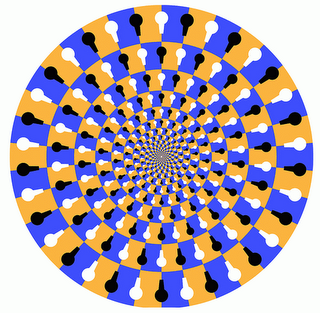 Optical illusions are a phenomenon which causes observers to misinterpret an object. The illusion can be natural or artificial (man-made). Its subjects are not only restricted to human beings, but animals also get confused by such phenomena. Strength of an optical illusion relies on the perception of the object, by an individual.
Optical illusions are a phenomenon which causes observers to misinterpret an object. The illusion can be natural or artificial (man-made). Its subjects are not only restricted to human beings, but animals also get confused by such phenomena. Strength of an optical illusion relies on the perception of the object, by an individual.
Artificial Optical Illusions
In 1832, a Swiss crystallographer named Louis Necker first published such optical illusions. He created three magic cubes and asked the observers to tell which side was nearest. Different people interpreted the model differently. Here is diagram of the magic cube, also known as the “Necker Cube”.

The color on side makes an observer think that that particular side of the cube is nearest.Another classical optical illusion is given below.

In this image observers are asked to identify the longest horizontal line among. Actually both of the lines are equal in length. Such illusions are called Muller-Lyer illusion.
Another interesting optical illusion was created in 1870 by L. Hermann. He created an image of a grid and asked the observers to count number of black dots. When an observer tries to count the dots all of them seem white, when they are viewed individually. The dots that are not focused seem black. Here is the image.

There are hundreds of other artificial illusions and I am sure you will find most of them over internet. Here is yet another interesting spinning wheel illusion.

Natural Optical Illusions
The scope of optical illusion is not limited to the artificial ones. In fact, they were inspired from the artificial illusions. Different animals use their camouflaging abilities to hide from their predators or when they are on hunt. Here is an image of stick insect camouflaging itself.

Some butterflies also have dots on their wings that resemble eyes. Hence successfully scaring away their predictors

Mirage is another example of natural optical illusion. This phenomenon is caused by rays of light refracted in layers of air having different densities. This refraction causes an imaginary pond of water to appear on surface.
Practical Usage of Optical Illusions
There are numerous uses of optical illusions. For example the following magic tap appears to be floating in mid air with unlimited supply of water.

DIY Magic Tap
Here is DIY Project to make this sort of Magic tap. See the video below.
Actually there is a hidden pipe under the stream of water. Given below is another man-made optical illusion. This photo shows the floor tiles at the Basilica of St. John Lateran, located in Rome.

The pattern is actually two dimensional, but it appears to be three dimensional. Optical illusions are also used in different exams to gauge the intelligence, psychology and interpretation skills of a person. Camouflaging abilities of animals are also replicated to hide soldiers, tanks, ships, nuclear reactors and other defense related installations.
